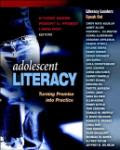Great chapter choice, Nat! I had something marked on every page.
Certainly the issue of flow is an important one. I first came upon this concept when I accessed Konrad Glogowski's presentation on the K-12 Conference last year (BTW, this is a free online conference. You can access the 2008 conference here). His presentation examined the use of blogs and wikis with students and how to assess and evaluate them. Anyway, the concept of flow wasn't new to me but I can certainly recognize when I am in the state of flow. I think that the reason that many students are disengaged is because they aren't experiencing that flow. When Wilhelm and Smith listed the 5 principles of flow experiences and one of them stood out for me.
Clear goals and immediate feedback was one that resonated with me. This really ties in with assessment for learning. We know that feedback is the most powerful tool in improving student achievement and student motivation. Yet, as teachers, we still over emphasize evaluation and assigning of a grade. I hear time and time again that students won't do the work if they don't get a mark. This certainly can be the case with students but how can we re-train them and us so that we have cycles of draft - feedback-revise-feedback - revise-.... where a grade is not in sight until it will be used as a summative assessment? That why I like the traits approach to teaching writing. There is an emphasis on examining models, lots of feedback on one trait at a time and time to take that feedback and make things better. This should create conditions of flow with student writers.
Inquiry is key to creating this flow. When I think about the times that I am experiencing flow it is most always when I am trying to find the answer to a question. I like the suggestion that the authors made of creating classes around essential inquiry questions and then answering those questions by engaging in a variety of texts. What if teachers built text sets based around essential questions (and this would include not only print but web-based texts). How can we integrate text messaging, video gaming and social networking as part of these texts sets? How can we move away from our dependence on literary fiction and move into real life texts - the texts that we encounter as adults over 90% of the time? I believe that inquiry-based classrooms provide the answers to these questions.
I think that one of the things that we have to be careful of is having too narrow a definition of what it means to be literate. When the authors talk about expanding our notions of what counts as text and meaningful reading and writing, I keep thinking about how our education system is narrowing the definition - i.e. success on the OSSLT. Does it mean that students are literate because they can write a news report and an opinion piece? Our students are communicating in a variety of ways - and the new ways of communicating require different skills sets than the old ways.
Bottom line, as the authors state on the last page, we need to..."build bridges from the literacies they have to the literacies they need". And I think that we can do that through the power of inquiry.
Subscribe to:
Post Comments (Atom)

2 comments:
I also like the idea of inquiry
texts which goes back to our
discussion of class sets of books.
Widening our notion of texts is vital. This goes cross-curricular. Wilhelm and Smith mention that fun and humor are often lacking. The novel Cheeseburger Subversive was a
huge hit with my reluctant male readers for this reason. I have had
students write fiction based on video games but am not sure how to use it as a text?
Wilhelm and Smith state in the chapter that there is a lot of instructional/procedural text in video games. So if we can bridge/connect that type of reading done outside the class to our classrooms, then we are really validating the reading that many students do but don't acknowledge as reading because it doesn't look like 'school' reading. Does this make sense? Could students write instructions/procedures to their favorite video games? Could they bring in examples of text that they have to read to play a video game and look for text features of procedural texts? Could we compare it with other types of procedural texts (like recipes and manuals such as household repair instructions) I don't play video games but my son does and I often see screens where he has to use graphic text to set up the characters and the games. I bet our students would be great sources for this type of text.
Post a Comment